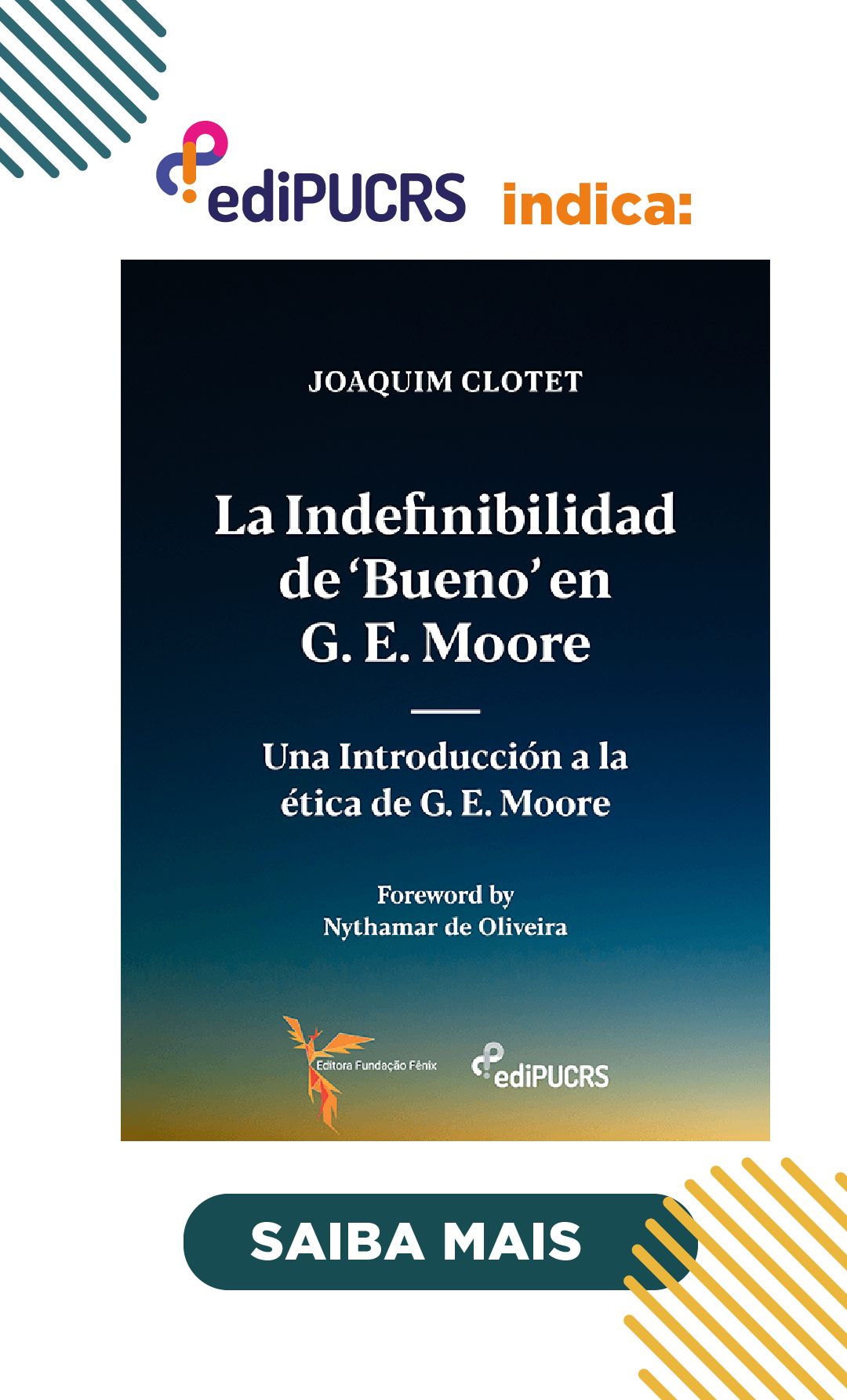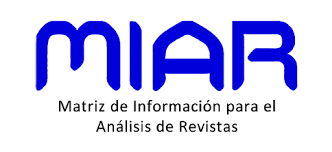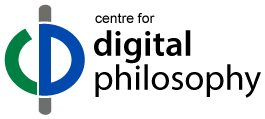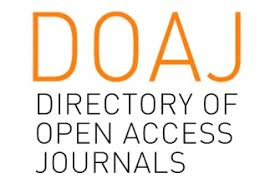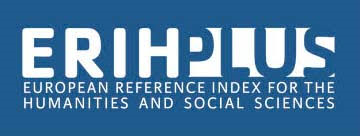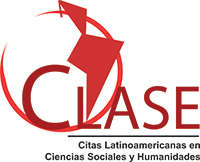A Hipótese da Linguagem da Comunicação para a Evolução da Consciência
DOI:
https://doi.org/10.15448/1984-6746.2024.1.46080Palavras-chave:
Representações, Cognição, Linguagem, Consciência, EvoluçãoResumo
O presente artigo se ocupa do problema funcional da consciência referente às questões do porquê a consciência evoluiu e se é relevante para os organismos. A hipótese defendida é que a consciência tem a função comunicativa capaz de recrutar a memória de trabalho, especialmente, os seus subcomponentes especialistas em linguagem, e o sistema cognitivo-computacional, que tem, em seu núcleo, uma estrutura sintática para codificar simbolicamente a informação implícita no organismo. Aos organismos que possuem esses recursos, foi conferida uma vantagem adaptativa, uma vez que tais organismos vivem numa organização socialmente interdependente e, assim, puderam comunicar aos outros organismos, com mais complexidade e precisão do que a comunicação comportamental não simbólica, os seus estados internos e implícitos, tais como o estado dos seus corpos, as suas intenções, os seus planos, e as características do ambiente. A metodologia possui duas fases: primeiro, uma abordagem teórico-conceitual, com base em variados modelos explicativos teórico-experimentais, na qual foram comparadas diferentes definições teórico-conceituais para a origem da consciência. Depois, modelos filogenéticos de estudos comparativos forneceram insights válidos sobre a consciência em animais humanos e não-humanos. Assim, o objetivo geral aqui consiste em postular uma definição conceitual de consciência. Os resultados sugeriram quais as condições necessárias para a emergência da consciência no tocante à memória de trabalho, atenção, representações de alta-ordem e linguagem. Concluiu-se que a pesquisa está em uma fase de brainstorming. Nessa fase, a hipótese é avaliada criticamente e submetida a testes de aproximação com diferentes modelos. Se for bem-sucedida, ela poderá ser aplicada experimentalmente no futuro.
Downloads
Referências
ADAMS, Fred.; BEIGHLEY, Steve. Information, Meaning and Animal Communication. In: STEGMANN, Ulrich (Ed.). Animal Communication Theory: Information and Influence. Cambridge: Cambridge University Press, 2013. DOI: https://doi.org/10.1017/CBO9781139003551.024
ADOLPHS, Ralph. The Biology of Fear. Current Biology, v. 23, n. 2, p. 79-93, May 2013. DOI: https://doi.org/10.1016/j.cub.2012.11.055
BADDELEY, Alan, D; HITCH, Graham. Working Memory. Psychology of Learning and Motivation, [s.l.], v. 8, p. 47-89, 1974. DOI: https://doi.org/10.1016/S0079-7421(08)60452-1
BADDELEY, Alan, D. Working Memory. Science, Washington, v. 255, n. 5044, p. 556-9, January 1992. DOI: https://doi.org/10.1126/science.1736359
BADDELEY, Alan. D.; GATHERCOLE, Susan.; PAPAGNO, Constanza. The phonological loop as a language learning device, Psychological Review, Washington, v. 105, n. 1, p. 158–173, January 1998. DOI: https://doi.org/10.1037//0033-295X.105.1.158
BADDELEY Alan, D. The episodic buffer: a new component of working memory? Trends in Cognitive Sciensce, Cambridge, v. 4, n. 11, p. 417-423, November 2000. DOI: https://doi.org/10.1016/S1364-6613(00)01538-2
BADDELEY, Alan, D.; CHINCOTTA, Dino.; ADLAM, Ana-Lynne. Working memory and the control of action: evidence from task switching. Journal of Experimental Psychology: General, Washington, v. 130, n. 4, p. 641–57, December 2001. DOI: https://doi.org/10.1037//0096-3445.130.4.641
BADDELEY, Alan, D. Working memory and language: an overview. Journal of Communication Disorders, Amsterdam, v. 36, p. 189–208, February 2003. DOI: https://doi.org/10.1016/S0021-9924(03)00019-4
BECHTEL, William. Representations: From neural systems to cognitive systems. In: BECHTEL, William; MANDIK, Pete; MUNDALE, Jennifer; STUFFLEBEAM, Robert (Eds.), Philosophy and the Neurosciences: A Reader. Hoboken: Willey-Blackwell, p. 332-48, October 2001.
BERRIDGE, Kent, C. Motivation concepts in behavioral neuroscience. Physiology and Behavior, Amsterdam, v. 81, n. 2, p. 179-209, abril de 2004. DOI: https://doi.org/10.1016/j.physbeh.2004.02.004
BERWICK, Robert, C.; FRIEDERICI, Angela, D.; CHOMSKY, Noam; BOLHUIS, Johan. J. Evolution, Brain and the Nature of Language. Trends in Cognitive Sciences, Cambridge, v.17, n. 2, p. 89-98, February 2013. DOI: https://doi.org/10.1016/j.tics.2012.12.002
BERWICK, Robert, C.; CHOMSKY, Noam. Why Only Us Language and Evolution. Cambridge: MIT Press, 2015. DOI: https://doi.org/10.7551/mitpress/9780262034241.001.0001
BIRCH, Jonathan. In Search of the Origins of Consciousness. Acta Biotheoretica, London, v. 68, 287-94, September 2019. DOI: https://doi.org/10.1007/s10441-019-09363-x
BIRCH, Jonathan; SCHNELL, Alexandra, K.; CLAYTON, Nicola, S. Dimensions of Animal Consciousness. Trends Cognitive Science, Cambridge, v. 24, n. 10, p.789-801, October 2020. DOI: https://doi.org/10.1016/j.tics.2020.07.007
BLOCK, Ned. On a confusion about a function of consciousness. Behavioral and brain sciences, Cambridge, v. 18, n. 2, p. 227-87, June 1995. DOI: https://doi.org/10.1017/S0140525X00038188
BLOCK, Ned. Perceptual consciousness overflows cognitive access. Trends in Cognitive Sciences, Cambridge, v. 15, n.12, p. 1-9, December 2011. DOI: https://doi.org/10.1016/j.tics.2011.11.001
BOLHUIS, Johan, J.; TATTERSALL, Ian.; CHOMSKY, Noam.; BERWICK, Robert, C. How Could Language Have Evolved? PLoS Biology, [s.l.], v. 12, n. 8, p. 1-6, August 2014. DOI: https://doi.org/10.1371/journal.pbio.1001934
BROWN, Richard; LAU, Hakwan; LEDOUX, Joseph, E. Understanding the Higher-Order Approach to Consciousness. Trends in Cognitive Science, Cambridge, v. 23, n. 9, p. 754-768, September 2019. DOI: https://doi.org/10.1016/j.tics.2019.06.009
CARRUTERS, Peter. Valence and Value. Philosophy and Phenomenological Research, Hoboken, v. XCVII, n. 3, p. 658-80, November 2018. DOI: https://doi.org/10.1111/phpr.12395
CARRUTERS, Peter. The evolution of the Language. In: CARRUTERS, Peter; CHAMBERLAIN, Andrew (Eds), Evolution and the human mind: Modularity, language and meta-cognition. Cambridge: Cambridge University Press, 2000.
CARVALHO, Gil, B.; DAMASIO, Antonio, R.. Interoception and the origin of feelings: A new synthesis. Bioessays, Hoboken, v. 43, n. 6, p. 1-11, June 2021. DOI: https://doi.org/10.1002/bies.202000261
CHALMERS, David. Conscious Mind: in Search of a Fundamental Theory. New York: Oxford University Press, 1996.
CHUN, Marvin, M.; TURK-BROWNE, Nicolas, B. Interactions between attention and memory. Current Opinion in Neurobiology, Amsterdam, v. 17, n. 2, p. 177-84, April 2007. DOI: https://doi.org/10.1016/j.conb.2007.03.005
CHUN, Marvin, M. Visual working memory as visual attention sustained internally over time. Neuropsychologia, Amsterdam, v. 49, n.6, 1407–1409, May 2011. DOI: https://doi.org/10.1016/j.neuropsychologia.2011.01.029
CHURCHLAND, Patricia, S. A neurophilosophical slant on consciousness research. Progress in Brain Research, Amsterdam, v. 149, p. 285-293, February 2005. DOI: https://doi.org/10.1016/S0079-6123(05)49020-2
COHEN, Michael; DENNETT, Daniel. Consciousness cannot be separated from function. Trends in Cognitive Sciences, Cambridge, v. 15, n. 8, p. 358-64, August 2011. DOI: https://doi.org/10.1016/j.tics.2011.06.008
COSMIDES, L.; TOOBY, J. Evolutionary Psychology: New Perspectives on Cognition and Motivation. Annual Review of Psychology, Los Angeles, v. 64, p.201-29, January 2013. DOI: https://doi.org/10.1146/annurev.psych.121208.131628
DAMASIO, Antonio, R. Descartes’ Error: Emotion, Reason, and the Human Brain. New York: Peguin Books, p. 132-217, 1994.
DAMASIO, Anotnio, R. The Somatic Marker Hypothesis and the possible functions of the prefrontal cortex. Philosophical Transactions. Real Society London B, London, v. 351, p.1413-20, October 1996. DOI: https://doi.org/10.1098/rstb.1996.0125
DAMASIO, Antonio, R. Investigating the biology of consciousness. Philosophical Transactions Real Society London B. Londres, v. 353, p.1879-1882, November 1998. DOI: https://doi.org/10.1098/rstb.1998.0339
DAMASIO, Antonio, R. Self comes to mind: constructing the conscious brain. New York: Pantheon Books, 2010.
DAMASIO, Antonio, R. The Strange Order of Things: Life, Feeling, and the Making of Cultures. New York: Pantheon Books, 2018.
DEHAENE, Stanislas; KERSZBERG, Michel; CHANGEUX, Jean-Pierre. A neuronal model of a global workspace in effortful cognitive tasks. PNAS, [s.l.], v. 95, n. 24, p. 14529-34, November 1998. DOI: https://doi.org/10.1073/pnas.95.24.14529
DEHAENE, Stanislas; CHANGEUX, Jean-Pierre. Ongoing spontaneous activity controls access to consciousness: A neuronal model for inattentional blindness. PLoS Biology, [s.l], v. 3, n. 5, p. 910-27, May 2005. DOI: https://doi.org/10.1371/journal.pbio.0030141
DEHAENE, Stanislas; CHANGEUX, Jean-Pierre.; NACCACHE, Lionel; SACKUR, Jérome; SERGENT, Claire. Conscious, preconscious, and subliminal processing: a testable taxonomy. Trends in Cognitive Sciences. Cambridge, v.10, n. 5, p. 204-11, May 2006. DOI: https://doi.org/10.1016/j.tics.2006.03.007
DENNETT, Daniel. No bridge over the stream of consciousness. Behavioral and Brain Sciences, [s.l.], v. 21, n. 6, p. 753-4, December 1998. DOI: https://doi.org/10.1017/S0140525X98281751
DENNETT, Daniel. From Bacteria to Bach and Back the Evolution of Minds. New York: WW Norton & Company, 2017.
DESIMONE, Robert. Neural mechanisms for visual memory and their role in attention, PNAS, [s.l.], v. 93, n. 24, p. 13494-9, November 1996. DOI: https://doi.org/10.1073/pnas.93.24.13494
EDELMAN, Gerald. Bright Air, Brilliant Fire: on the matter of the mind. Washington: Basic Books, 1992.
EDELMAN, David. Animal Consciousness. In. BANKS, William P. (Ed.), Encyclopedia of Consciousness. Oxford: Elsevier, 2009a. DOI: https://doi.org/10.1016/B978-012373873-8.00003-7
EDELMAN, David; SETH, Anil, K. Animal consciousness: a synthetic approach. Trends in Neuroscience, Lausanne, v. 32, n. 9, p. 476-84, September 2009b. DOI: https://doi.org/10.1016/j.tins.2009.05.008
EDELMAN, David; GALLY, Joseph; BAARS, Bernard. Biology of Consciousness. Frontiers in Psychology, Lausanne, v, 2 n. 4, p. 1-7, January 2011. DOI: https://doi.org/10.3389/fpsyg.2011.00004
EICHENBAUM, Howard; FAGAN, Anne; MATHEWS, Paul; COHEN, Neal, J. Hippocampal system dysfunction and odor discrimination learning in rats: impairment or facilitation depending on representational demands. Behavioral Neuroscience, Washington, v. 102, n. 3, p. 331-9, June 1988. DOI: https://doi.org/10.1037//0735-7044.102.3.331
ENGELMANN, Jan B.; PESSOA, Luiz. Motivation Sharpens Exogenous Spatial Attention. Emotion, Washington, v.7, n. 3, p. 668-74, November 2007. DOI: https://doi.org/10.1037/1528-3542.7.3.668
ENGELMANN, Jan B.; DAMARAJU, Eswar; PADMALA, Srikanth; PESSOA, Luiz. Combined effects of attention and motivation on visual task performance: transient and sustained motivational effects. Frontiers in Human Neuroscience, Lausanne, v. 3, n. 4, p. 1-17, March 2009. DOI: https://doi.org/10.3389/neuro.09.004.2009
FEINBERG, Todd; MALLATT, Jan. The evolutionary and genetic origins of consciousness in the Cambrian Period over 500 million years ago. Frontiers in Psychology, Lausanne, v. 4, n. 667, p. 1-28, October 2013. DOI: https://doi.org/10.3389/fpsyg.2013.00667
FEINBERG, Todd; MALLATT, Jan. The Ancient Origins of Consciousness How the Brain Created Experience. Cambridge: MIT Press, 2016. DOI: https://doi.org/10.7551/mitpress/10714.001.0001
FEINBERG, Todd; MALLATT, Jan. Consciousness Demystified. Cambridge: MIT Press, 2018. DOI: https://doi.org/10.7551/mitpress/11793.001.0001
FRITH, Chris. The neural basis of consciousness, Psychological Medicine, [s.l.], v. 51, n. 4, p. 550–562, March 2019. DOI: https://doi.org/10.1017/S0033291719002204
GALLAGHER, Shaun. & ZAHAVI, David. The Phenomenological Mind. 2nd ed., New York: Routledge, 2012. DOI: https://doi.org/10.4324/9780203126752
GATHERCOLE, Susan E. Nonword repetition and word learning: The nature of the relationship. Applied Psycholinguistics, Cambridge, v. 27, n.4, p. 513–43, September 2006. DOI: https://doi.org/10.1017/S0142716406060383
GILBERT, Daniel, T.; WILSON, Timothy, D. Prospection: Experiencing the future. Science, Washington, v. 317, n. 5843, p. 1351-4, September 2007. DOI: https://doi.org/10.1126/science.1144161
GOLDMAN-RAKIC, Patricia, S.; FUNAHASHI, Shintaro.; BRUCE, Charles, J. Neocortical memory circuits. Cold Spring Harbor Symposia Quantitative Biology, Cold Spring Harbor, NY, v. 55, p.1025-38, February 1990. DOI: https://doi.org/10.1101/SQB.1990.055.01.097
GRAZIANO, Michael. Rethinking Consciousness: A Scientific Theory of Subjective. New York: W.W. Norton & Company, 2019.
HAUSER, Marc D. The Evolution of the Communication. Cambridge: The MIT Press, 1996. DOI: https://doi.org/10.7551/mitpress/2867.001.0001
HAUSER, Marc, D.; CAREY, Susan; HAUSER, Lilian, B. Spontaneous number representation in semi-free-ranging rhesus monkeys. Procedures in Biology Science, Washington, v. 267, n. 1445, p. 829-33, April 2000. DOI: https://doi.org/10.1098/rspb.2000.1078
HAUSER, Marc, CHOMSKY, Noam; FICTH, Tecumseh. The faculty of language: What is it, Who is it, How did it evolve? Science, Washington, v. 298, n. 5598, p. 1569-80, November 2002. DOI: https://doi.org/10.1126/science.298.5598.1569
HORGAN, Terrence. Jackson on Physical Information and Qualia. Philosophical Quarterly, Oxford, v. 34, n. 135, p. 147–83, April 1984. DOI: https://doi.org/10.2307/2219508
JACKSON, Frank. Epiphenomenal Qualia. The Philosophical Quarterly, Oxford, v. 32, n. 127, p. 127-36, April 1982. DOI: https://doi.org/10.2307/2960077
KANDEL, Eric, R. The molecular biology of memory storage: a dialogue between genes and synapses. Science, Washington, v. 294, n. 5544, p. 1030-8, November 2001. DOI: https://doi.org/10.1126/science.1067020
KOLATA, Stefen; LIGHT, Kenneth; GROSSMAN, Henya, C.; HALE, Gregory; MATZEL, Louis, D. Selective attention is a primary determinant of the relationship between working memory and general learning ability in outbred mice. Learning and Memory, Cold Spring Harbor, NY, v. 14, n. 1, p. 22-8, Jan-Feb 2007. DOI: https://doi.org/10.1101/lm.408507
LACHMANN, Michael. The value of information in signals and cues. In: STEGMANN, Ulrich (Ed.) Animal Communication Theory: Information and Influence. Cambridge: Cambridge University Press, 2013. DOI: https://doi.org/10.1017/CBO9781139003551.021
LAMME, Victor. Separate neural definitions of visual consciousness and visual attention; a case for phenomenal awareness. Neural Networks, Amsterdam, v. 17, n. 5-6, p. 861–72, June-July 2004. DOI: https://doi.org/10.1016/j.neunet.2004.02.005
LAU, Hakwan. C.; ROSENTHAL, David. Empirical support for higher-order theories of conscious awareness. Trends Cognitive Science, Cambridge, v. 15, n. 8, p. 365-73, August 2011. DOI: https://doi.org/10.1016/j.tics.2011.05.009
LEDOUX, Joseph, E.; BROWN, Richard. A higher-order theory of emotional consciousness. PNAS, [s.l.], v.114, n. 10, p. e2016–e2025, January 2017. DOI: https://doi.org/10.1073/pnas.1619316114
LEDOUX, Joseph, E. The Deep History of Ourselves: The Four-Billion-Year Story of How We Got Conscious Brains. New York: Viking, 2019.
LEDOUX, J.E. As soon as there was life, there was danger: the deep history of survival behaviours and the shallower history of consciousness. Philosophical Transactions Real Society London B, London, v. 377, n. 0292, p. 1-15, December 2021. DOI: https://doi.org/10.1098/rstb.2021.0292
LEVINE, Joseph. Materialism and Qualia: The Explanatory Gap. Pacific Philosophical Quarterly, Los Angeles, v. 64, n. 4, p. 354–61, October 1983. DOI: https://doi.org/10.1111/j.1468-0114.1983.tb00207.x
LEWIS, Sara, M.; CRATSLEY, Christopher, K. Flash Signal Evolution, Mate Choice and Predation in Firelies. Annual Review of Entomology, San Mateo, CA, v. 53, .1, p. 293-321, January 2008. DOI: https://doi.org/10.1146/annurev.ento.53.103106.093346
MCCABE, David, P.; ROEDIGER, Henry, L.; MCDANIEL, Mark, A.; BALOTA, D.A.; HAMBRICK, D.Z. The relationship between working memory capacity and executive functioning: evidence for a common executive attention construct. Neuropsychology, Washington, v. 24, n. 2, p. 222-243, March 2010. DOI: https://doi.org/10.1037/a0017619
MACPHAIL, Euan. Cognitive Function in mammals: the evolutionary perspective. Cognitive Brain Research, Amsterdam, v. 3, n. 3-4, p. 2790-90, May 1995. DOI: https://doi.org/10.1016/0926-6410(96)00013-4
MARLER, Peter; EVANS, Christopher. Birds calls: Just emotional displays or something more? Ibis, London, v. 138, n.1, p. 26-33, January 1996. DOI: https://doi.org/10.1111/j.1474-919X.1996.tb04310.x
MILLIKAN, Ruth, G. Natural information, intentional signs and animal communication. In: STEGMANN, Ulrich (Ed.) Animal Communication Theory: Information and Influence, Cambridge: Cambridge University Press, 2013. DOI: https://doi.org/10.1017/CBO9781139003551.008
MOSER, Edvard, I.; KROPFF, Emilio; MOSER, May-Britt. Place cells, grid cells, and the brain's spatial representation system. Annual Review Neuroscience, Palo Alto, v. 31, p. 69-89, July 2008. DOI: https://doi.org/10.1146/annurev.neuro.31.061307.090723
MYERS, Nicholas, E.; STOKES, Mark, G.; NOBRE, Anna, C. Prioritizing Information during Working Memory: Beyond Sustained Internal Attention. Trends in Cognitive Science, Cambridge, v. 21, n. 6, p. 449-61, June 2017. DOI: https://doi.org/10.1016/j.tics.2017.03.010
NAGEL, Thomas. What is it like to be a bat? The Philosophical Review, Ithaca, NY, v. 83, n. 4, p. 435-450, October 1974. DOI: https://doi.org/10.2307/2183914
OBERAUER, Klaus. Working Memory and Attention – A Conceptual Analysis and Review. Journal of Cognition, [s.l.], v. 2, n. 1, p. 1-23, August 2019. DOI: https://doi.org/10.5334/joc.58
PANICHELLO, Matthew, F.; BUSCHMAN, Timothy, J. Shared mechanisms underlie the control of working memory and attention. Nature, London, v. 592, p. 601–5, March 2021. DOI: https://doi.org/10.1038/s41586-021-03390-w
PANKSEEP, Jaak. Affective Neuroscience: The Foundations of Human and Animal Emotions. Oxford: Oxford University Press, 1998. DOI: https://doi.org/10.1093/oso/9780195096736.001.0001
PANKSEEP, Jaak. Affective neuroscience of the emotional Brain-Mind: evolutionary perspectives and implications for understanding depression. Dialogues in Clinical Neuroscience, London, v. 12, n. 4, p. 533-45, December 2010. DOI: https://doi.org/10.31887/DCNS.2010.12.4/jpanksepp
PICCININI, Gualtiero; SCARANTINO, Andrea. Computation vs. information processing: why their difference matters to cognitive science. Studies in History and Philosophy of Science, Amsterdam, v. 41, n.3, p. 237–46, September 2010. DOI: https://doi.org/10.1016/j.shpsa.2010.07.012
PINKER, Steven. Language as an adaptation to the cognitive niche. In: CHRISTIANSEN, Morten; KIRBY, Simon (Eds.) Language evolution: Studies in The Evolution of Language. New York: Oxford University Press, 2003. DOI: https://doi.org/10.1093/acprof:oso/9780199244843.003.0002
PINKER, Steven.; JACKENDOFF, Ray. The faculty of language: what’s special about it? Cognition, Amsterdam, v. 95, n. 2, p. 201-36, March 2005. DOI: https://doi.org/10.1016/j.cognition.2004.08.004
PINKER, Steven. The cognitive niche: Coevolution of intelligence, sociality, and language PNAS, [s.l.], v. 107, n. 2, p. 8993-9, May 2010. DOI: https://doi.org/10.1073/pnas.0914630107
PRINZ, Jesse. Gut Reactions. New York: Oxford University Press, 2004.
ROSENTHAL, David, M. Consciousness and its function. Neuropsychologia, Amsterdam, v. 46, n. 3, p. 829-40, February 2008. DOI: https://doi.org/10.1016/j.neuropsychologia.2007.11.012
SEARLE, John. The Intentionality and their Place in Nature. Synthese, Berlin, v. 61, n. 1, p. 3-16, October de 1984. DOI: https://doi.org/10.1007/BF00485486
SPEIDEL, Gisela, E. Phonological short-term memory and individual differences in learning to speak: a bilingual case study. First Language, Thousand Oaks, CA, v. 13, n. 37, p. 69–91, February 1993. DOI: https://doi.org/10.1177/014272379301303705
STEGMANN, Ulrich, E. A consumer-based teleosemantics for animal signals. Philosophy of Science, [s.l.], v. 76, n. 5, p. 864-75, December 2009. DOI: https://doi.org/10.1086/605820
TOMASELLO, Michael; CALL, Joseph; HARE, Brian. Chimpanzees understand psychological states: the question is which ones and to what extent. Trends in Cognitive Sciences, Cambridge, v. 7, n. 4, p. 153-6, April 2003. DOI: https://doi.org/10.1016/S1364-6613(03)00035-4
TOMASELLO, Michael. The ultra-social animal. European Journal of Social Psychology, New York, v. 44, p. 187–94, February 2014. DOI: https://doi.org/10.1002/ejsp.2015
TONG, Frank. Imagery and visual working memory: one and the same? Trends in Cognitive Science, Cambridge, v. 17, n. 10, p. 489-90, October 2013. DOI: https://doi.org/10.1016/j.tics.2013.08.005
TOOBY, John; DEVORE, Irven. The reconstruction of hominid evolution through strategic modeling. In: KINZEY, Warren, G. (Ed.). The Evolution of Human Behavior: Primate Models. Albany: SUNY Press, 1987.
TOOBY, J.; COSMIDES, L. Evolutionary Psychology and the Generation of Culture: Theoretical Considerations. Ethology and Sociobiology, New York, v. 10, n. 1-3 , p. 29-49, January 1989. DOI: https://doi.org/10.1016/0162-3095(89)90012-5
VAN GULICK, Robert. Consciousness and Cognition. In: MARGOLIS, Eric; SAMUELS, Richard; STICH, Stephen (Eds.), The Oxford Handbook of Philosophy of Cognitive Science, Oxford: Oxford Handbooks, v. 1, n. 1, p. 19-40, May 2012, Available: <https://doi.org/10.1093/oxfordhb/9780195309799.013.0002>. Accessed: March 2, 2024.
VAN GULICK, Robert. Consciousness. Stanford Encyclopedia of Philosophy. Palo Alto, 2014. Available: <https://plato.stanford.edu/entries/consciousness/#Con>. Accessed: February 30, 2024.
VARELA, Francisco; THOMSON, Evan. Neural synchronicity and the unity of mind: a neurophenomenological perspective. In: CLEERMANS, Axel (Ed.) The Unity of Consciousness: Binding, Integration, and Dissociation. Oxford: Oxford University Press, 2003. DOI: https://doi.org/10.1093/acprof:oso/9780198508571.003.0014
WEBB, Taylor, GRAZIANO, Michael. The Attention Schema Theory: a mechanistic account of subjective awareness. Frontiers in Psychology, Lausanne, v. 6, n. 500, p. 1-11, April 2015. DOI: https://doi.org/10.3389/fpsyg.2015.00500
WU, Wayne; Morales, Jorge. The Neuroscience of Consciousness. Stanford Encyclopedia of Philosophy, Palo Alto, 2018. Available: <https://plato.stanford.edu/entries/consciousness-neuroscience/#SpecCons>. Accessed: March 8, 2024.
Downloads
Publicado
Como Citar
Edição
Seção
Licença
Copyright (c) 2024 Veritas (Porto Alegre)

Este trabalho está licenciado sob uma licença Creative Commons Attribution 4.0 International License.
Direitos Autorais
A submissão de originais para a Revista Veritas implica na transferência, pelos autores, dos direitos de publicação. Os direitos autorais para os artigos publicados nesta revista são do autor, com direitos da revista sobre a primeira publicação. Os autores somente poderão utilizar os mesmos resultados em outras publicações indicando claramente a Revista Veritas como o meio da publicação original.
Licença Creative Commons
Exceto onde especificado diferentemente, aplicam-se à matéria publicada neste periódico os termos de uma licença Creative Commons Atribuição 4.0 Internacional, que permite o uso irrestrito, a distribuição e a reprodução em qualquer meio desde que a publicação original seja corretamente citada. Copyright: © 2006-2020 EDIPUCRS
